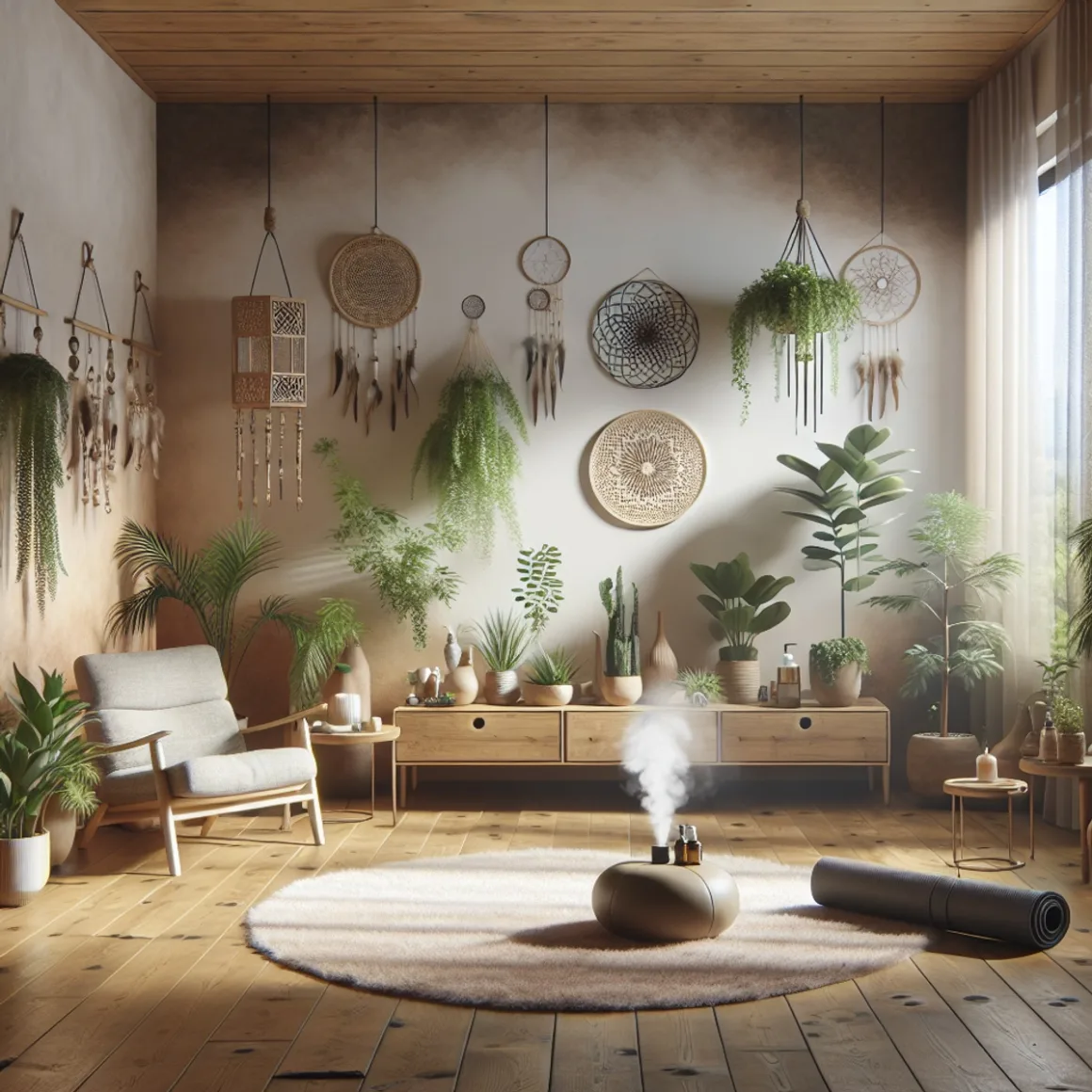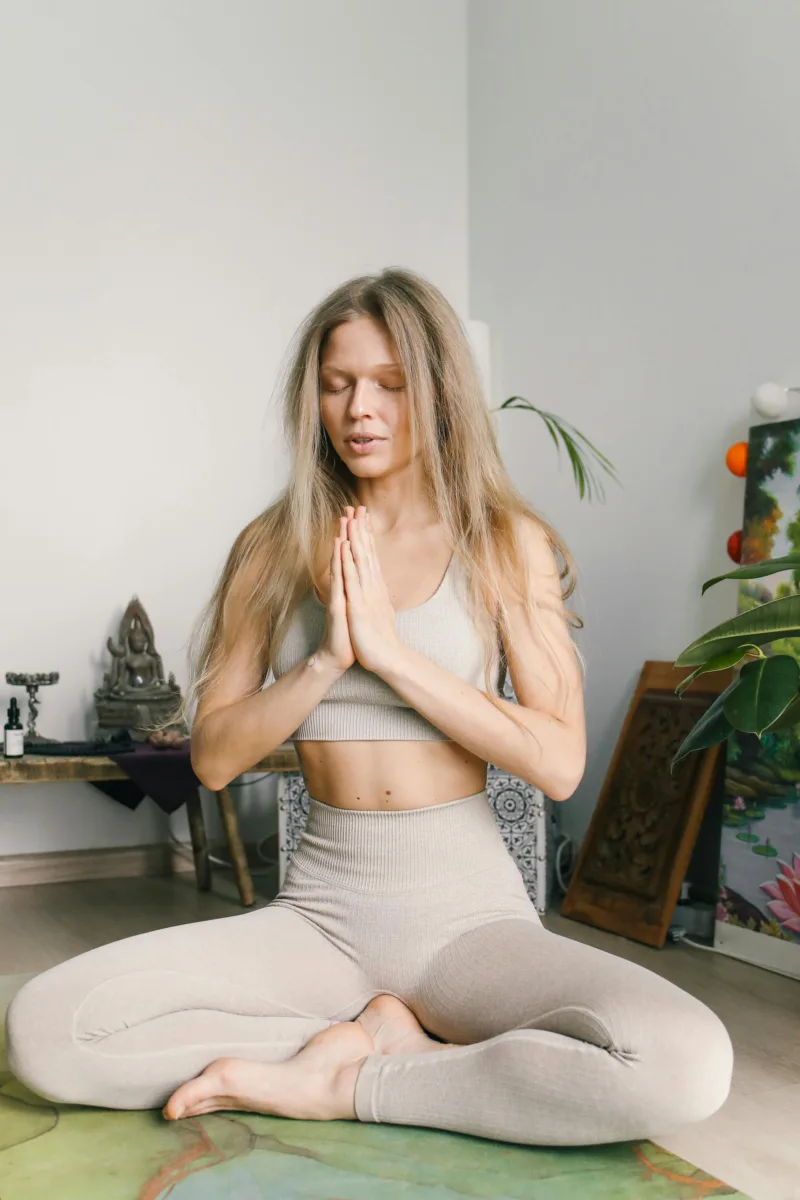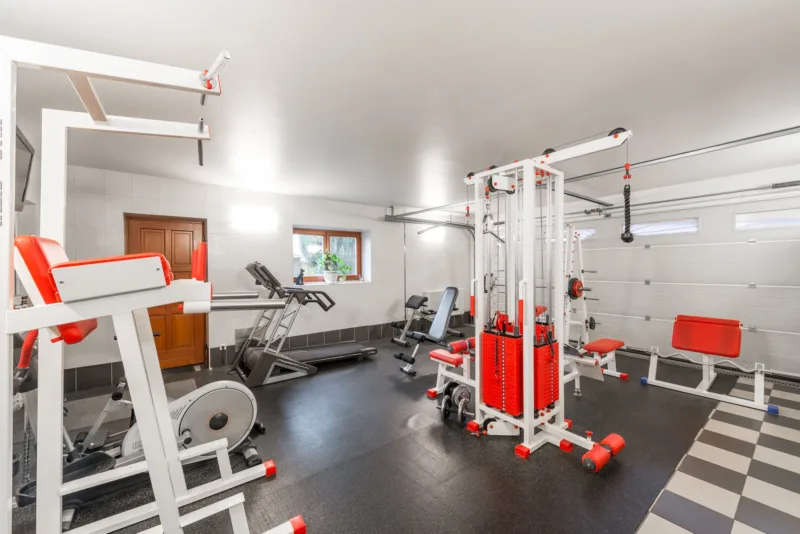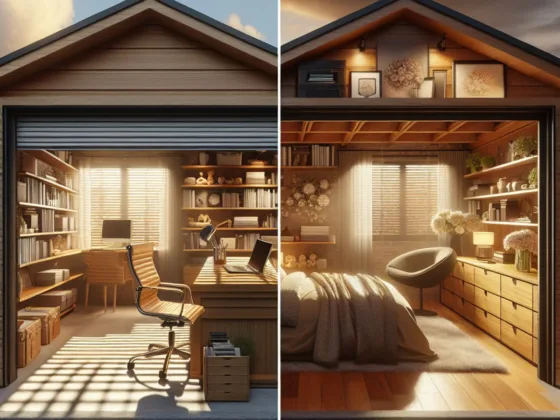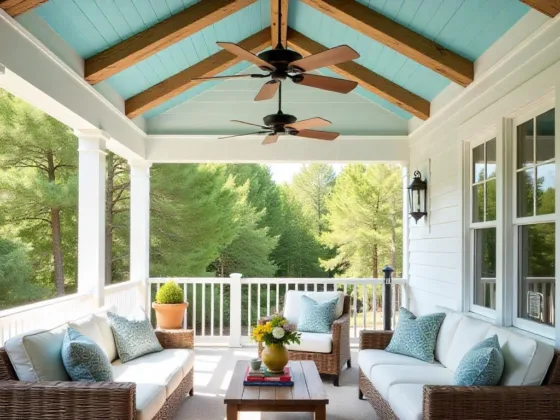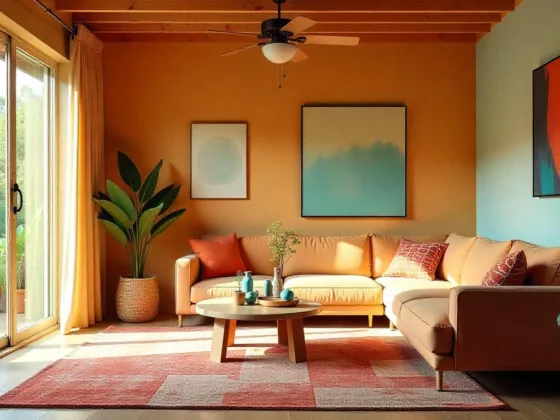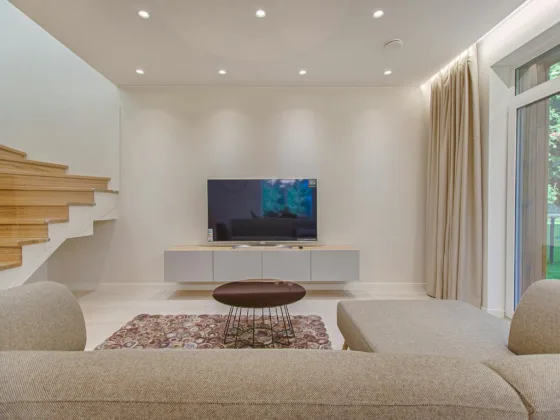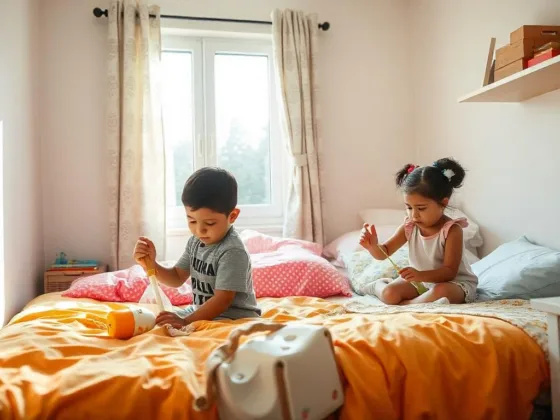Table of Contents Show
Introduction
Imagine a space within your home or office that is solely dedicated to nurturing your mental and physical well-being. This is the essence of wellness rooms – specially designed environments that serve as sanctuaries for relaxation and rejuvenation. At home, these rooms provide a private retreat from the hustle of daily life, while in the workplace, they offer employees a space to decompress and recharge.
In this article, you will discover the myriad benefits that wellness rooms can bring into your life. You’ll learn how to infuse various design elements to create a serene atmosphere, whether you’re carving out a meditation nook or transforming an entire room into a spa-like sanctuary. With practical advice on everything from nature-inspired accents to innovative technologies, you will be equipped with design secrets that turn any space into an oasis of calm.
What Are Wellness Rooms?
Wellness rooms are personal havens promoting well-being. They are spaces specifically designed to help individuals relax and find balance in their lives. Whether it’s a dedicated meditation room, a home gym, or a spa-like bathroom, these areas are intended to support both mental and physical health.
The Importance of Relaxation
A fundamental goal of wellness room design is to create an environment that encourages relaxation. In today’s fast-paced world, where stress is all too common, having a designated space where you can unwind and recharge is essential for your overall well-being.
Expert Tips for Serene Spaces
Designing a wellness room requires careful consideration of various factors that contribute to tranquility. Here are some expert tips for crafting serene spaces:
- Bring Nature Indoors: Incorporate natural elements such as plants, natural light, and organic materials like wood or stone to create a connection with the outdoors.
- Choose Calming Colors: Opt for soft, muted hues like blues, greens, or neutrals that promote a sense of calmness.
- Create Comfortable Seating: Invest in comfortable seating options like plush chairs or floor cushions where you can relax and unwind.
- Eliminate Clutter: Keep the space clean and clutter-free to reduce visual distractions and create a sense of order.
- Integrate Relaxing Scents: Use essential oils, scented candles, or aromatic herbs to introduce soothing fragrances into the room.
- Consider Soundproofing: If possible, minimize external noise by using sound-absorbing materials like carpets or acoustic panels.
Types of Wellness Spaces
Wellness rooms can take various forms depending on your needs and preferences. Here are some common types of wellness spaces:
- Meditation Rooms: Quiet, serene areas designed specifically for meditation practice.
- Home Gyms: Fitness-oriented spaces equipped with exercise equipment and ample room for workouts.
- Spa-Like Bathrooms: Luxurious bathrooms featuring elements like jacuzzi tubs, rainfall showers, and soothing lighting.
Expect to finish this journey with abundant inspiration and actionable steps for prioritizing your well-being through interior design tailored to soothe the senses and calm the mind.
1. Benefits of Wellness Rooms for Your Mind and Body
Wellness rooms are private spaces that prioritize relaxation and well-being. Having a dedicated area in your home for unwinding can have positive effects on both your physical and mental health. Here are the main advantages:
Enhanced Overall Well-being
Creating a space solely for relaxation can greatly improve your overall health. It’s somewhere you can go to escape from the busyness of everyday life, allowing you to relax and recharge.
Sanctuary for Stress Relief
Wellness rooms are like havens where you can escape from the things that cause you stress. They’re designed to help reduce anxiety and provide a therapeutic outlet for clearing your mind and relieving tension.
Versatile Mindfulness and Activity Zones
Whether you want a quiet spot for meditation or an area to do energizing exercises, wellness rooms can be customized to fit your needs. They’re flexible spaces that can accommodate activities like yoga or Pilates as well as more dynamic workouts.
Understanding these benefits will give you a better idea of why wellness rooms are so impactful. Now, let’s explore the key design elements that contribute to creating such a peaceful environment.
2. Essential Elements of a Well-Designed Wellness Room
Creating wellness rooms that promote relaxation and well-being requires careful consideration of various design elements. This section will delve into the essential components that contribute to the tranquility and functionality of these spaces.
2.1 Incorporating Nature-Inspired Elements
Biophilic design, or integrating natural elements into interior settings, has been linked to increased well-being, reduced stress levels, and improved cognitive function. In creating your wellness room, consider incorporating some aspects of nature into your design.
- Indoor Plants: Adding greenery to your space not only enhances the aesthetic appeal but also improves air quality and creates a calming environment. Popular choices include snake plants, spider plants, and peace lilies, known for their air-purifying properties.
- Natural Textures: Incorporating materials such as wood, stone, or bamboo into your design can help create a calm corner that feels more connected to the outdoors. These textures can be introduced through furniture, decorative pieces, or even wall finishes.
- Views and Daylight: If possible, position your wellness room near windows to take advantage of natural light and outdoor views. These elements can help create a serene atmosphere conducive to relaxation and mindfulness activities.
- Water Features: The sound of flowing water has a soothing effect that can aid in stress relief. Consider including small indoor fountains or aquariums in your wellness room for added tranquility.
2.2 Choosing Comfortable and Ergonomic Furniture
Furniture plays a crucial role in any space dedicated to relaxation and self-care. Opt for pieces that provide comfort without compromising on style or ergonomics.
- Seating: Comfortable seating is key in any wellness room. Consider incorporating items such as yoga balls, bean bags, recliners, or even hammocks based on your personal preference and the activities you plan to engage in within the space.
- Ergonomics: If your wellness room includes a workspace, ensure it is equipped with ergonomic furniture to help maintain proper posture and prevent physical discomfort during prolonged periods of sitting. Adjustable chairs and desks can make a significant difference.
2.3 Setting the Mood with Lighting and Colors
Lighting and color schemes significantly influence the vibe of any space. For wellness rooms, aim for a calming and inviting atmosphere.
- Dimmed Lighting: Soft, dimmable lighting can help create a relaxing environment. Consider installing adjustable light fixtures or using lamps with dimmer switches to easily control the brightness in your room.
- Calming Colors: Color has a profound effect on our mood and emotions. Shades like blues, greens, and neutrals are known for their calming effects and are excellent choices for relaxation spaces.
2.4 Adding Greenery and Natural Elements
Incorporating elements of nature into your wellness room design can significantly enhance its calming effect.
- Plants: Indoor plants not only add life to your room but also purify the air by removing toxins. Opt for low-maintenance plants if you don’t have a green thumb.
- Natural Materials: Use materials like wood, stone, or bamboo in your furniture or decor items to bring an earthy feel to your wellness space.
With these design elements in mind, you’re well on your way to creating a serene, inviting wellness room where you can retreat from the stresses of daily life.
2.2 Soundproofing for a Tranquil Environment
Creating a wellness space means designing an area where relaxation and rejuvenation are paramount. One critical aspect is ensuring the environment remains free from intrusive noises that can disturb the peace. Soundproofing your wellness room is not just a luxury; it’s a necessity for those seeking a tranquil retreat from the bustling world outside.
Key Design Principles for Soundproofing
Soothing Colors and Lighting
Start by selecting calming colors for your walls, as these can have a subconscious effect on your sense of tranquility. Pair this with dimmed lighting to create an ambiance that encourages relaxation.
Comfortable Seating and Ergonomic Furniture
Choose furniture that supports the body comfortably, reducing tension and allowing you to unwind fully.
Incorporation of Natural Elements
Integrating plants and other natural elements can contribute to sound absorption while also enhancing the overall aesthetic.
Soundproofing Strategies
- Insulate Walls: Consider using acoustic insulation materials within your walls to dampen external sounds. For existing rooms, adding dense foam panels or mass-loaded vinyl can make an audible difference.
- Seal Gaps: Ensure that all gaps around doors and windows are sealed tightly. Acoustic seals can prevent noise leaks effectively.
- Install Double Glazing: If windows are part of your wellness room, double-glazed windows can dramatically reduce noise pollution from outside.
- Use Heavy Curtains or Blinds: Thick, heavy curtains or specially designed soundproof blinds can add an extra layer of noise protection.
- Add Soft Furnishings: Carpets, rugs, and upholstered furniture will absorb sound waves and reduce echo within the room.
Remember, even small adjustments in your wellness room can significantly impact how sound travels and is perceived. By implementing these soundproofing techniques, you ensure that your calm corner design maintains its purpose as a sanctuary for mental clarity and physical relaxation. These steps will help create the serene atmosphere necessary for a space dedicated to well-being without distractions from the external environment.
3. Designing Specific Wellness Areas in Your Home
Crafting wellness spaces within your home involves a meticulous process of blending elements of serenity, fitness, and relaxation. Each wellness area is unique, reflecting the individual’s needs and preferences. Let’s delve into creating these serene spaces, from meditation corners to home gyms and spa-like bathrooms.
Meditation Space: A Corner for Serenity and Mindfulness
A fundamental aspect of a wellness room is a designated meditation space. This area is your personal retreat for mindfulness practices, facilitating mental clarity and stress relief. To create your Zen room:
- Choose a quiet spot: Find an area in your home that offers minimal disruption. This could be a corner of a room or an entire section depending on the available space.
- Simplify: Keep the design minimalist to avoid distractions during meditation. A clean, clutter-free environment promotes tranquility.
- Comfort is key: Include soft mats, cushions, or chairs that offer comfort during meditation sessions.
- Incorporate calming elements: Use elements like indoor water fountains, Zen sand gardens, or aroma diffusers with calming scents like lavender to promote relaxation.
Energizing Home Gym Designs
Designing an invigorating workout space within your wellness room can contribute significantly to your physical well-being. Home gyms provide easy access to workout equipment and fitness streaming offerings.
Here are tips for designing an energizing home gym even on a budget:
- Space utilization: Depending on the available space, you can dedicate an entire room or allocate a section of a room for your home gym.
- Equipment selection: Choose versatile equipment that caters to multiple workout regimes such as resistance bands, dumbbells, or kettlebells.
- Flooring: Opt for durable flooring that can handle heavy equipment and high-intensity workouts.
- Motivating visuals: Display motivational quotes or images that inspire you to stay committed to your fitness goals.
- Access to fitness streaming offerings: Arrange for internet connectivity and a screen to follow online workout routines.
Crafting Spa-Like Bathrooms
Achieving a spa-like experience at home is possible with the incorporation of luxurious elements like sauna installations or steam shower conversions. Here’s how you can transform your bathroom into a wellness retreat:
- Steam Shower Conversion: Converting your existing shower into a steam shower can provide a rejuvenating steam bath experience. Ensure proper waterproofing, ventilation, and a comfortable seat.
- Sauna Installation: If space permits, consider installing an indoor sauna. Saunas offer numerous health benefits including improved circulation, stress relief, and detoxification.
- Use of natural elements: Incorporate natural textures like wood or stone for an authentic spa feel. Add greenery through indoor plants that thrive in humid environments.
- Lighting and aroma: Install dimmable lights to create a relaxing ambiance. Use essential oils like eucalyptus for their soothing properties.
Each of these spaces – the meditation area, home gym, and spa-like bathroom – contributes to creating a comprehensive wellness room within your home. Catering to both mental and physical health needs, these spaces offer a balanced approach to achieving overall well-being.
Embracing Technology for Enhanced Wellness Experiences
In the pursuit of creating a sanctuary for well-being, innovative technologies play a pivotal role in shaping the modern wellness room ecosystem. These technologies not only refine the ambiance but also augment the overall functionality of the space, making it more conducive to relaxation and rejuvenation.
Lighting Technology: The Heartbeat of Wellness Spaces
One cannot underestimate the influence of lighting on both mood and health. Smart lighting systems stand at the forefront of wellness tech, offering unparalleled control over the luminous environment:
- Circadian Lighting: Smart lighting technology enables you to sync lighting with natural daylight patterns, thereby supporting your circadian rhythm. You can program these systems to gradually brighten with warm tones in the morning, simulating sunrise, and dim to cooler tones towards evening, mimicking sunset.
- Mood Enhancement: Adjustable settings allow you to create scenes that evoke calmness or focus. For instance, a soft blue hue might be ideal for meditation, while a vibrant yellow could energize a workout session.
- Remote Control & Automation: With apps or voice commands, adjust lighting without interrupting your relaxation routine. Automate schedules so that you never have to enter a dark room or bother with manual adjustments.
By customizing your lighting setup according to your preferences and activities, you can create an atmosphere that promotes well-being and enhances your overall experience.
Wellness Tech: Apps and Devices for a Personalized Experience
Beyond lighting, several other wellness technologies can be incorporated into your space:
- Sound Systems: High-quality speakers integrated with soundscaping apps can fill your wellness room with natural sounds like flowing water or rustling leaves, creating an acoustic barrier from the bustling outside world.
- Air Quality Monitors: Devices that monitor air quality ensure that your wellness space remains free of pollutants and allergens, which is essential for respiratory health and overall comfort.
- Aromatherapy Diffusers: These can be synced with smart home systems to release soothing scents at specific times of day, aiding in relaxation and stress relief.
- Therapeutic Devices: Consider adding massage chairs or light therapy devices that can be controlled via smartphone apps to tailor therapeutic experiences to your personal preferences.
By incorporating these technologies into your wellness room setup, you can create a personalized environment that caters to your specific needs and preferences.
Designing Your Wellness Room with Technology
When integrating these elements into your wellness room design, keep the following pointers in mind:
- Choose devices that integrate seamlessly into your lifestyle.
- Prioritize user-friendly interfaces for stress-free operation.
- Consider interoperability to ensure different technologies work in harmony.
- Maintain balance; avoid cluttering space with too many gadgets.
By following these guidelines, you can create a well-designed wellness room that combines technology and tranquility harmoniously.
As you integrate these sophisticated elements into your wellness space, remember to preserve the essence of tranquility inherent in its purpose. Technology should enhance rather than overpower the serene atmosphere you aim to cultivate.
Wellness Room Design: Extending the Principles to Workplace Environments
As the nature of work continues to evolve, particularly in light of the interior design shifts during the pandemic, the concept of wellness room design has increasingly become a cornerstone for enhancing employee well-being and productivity. With stress-related illnesses on the rise, organizations need to recognize the role that physical spaces play in health and morale.
Prioritizing Employee Well-Being
The integration of wellness rooms into office environments addresses multiple facets of an employee’s day-to-day experience:
- Physical Health: Spaces designated for relaxation or physical activity can lead to reduced rates of absenteeism and may even mitigate workplace injuries by providing areas for proper stretching or quick breaks.
- Mental Health: These rooms offer a retreat from the high-energy, often stressful pace of professional settings. Employees can utilize these spaces to recharge mentally, ultimately enhancing focus and performance upon return.
- Emotional Health: Wellness rooms serve as a safe haven where employees can engage in mindfulness practices or simply enjoy moments of solitude, fostering improved emotional resilience.
Designing for Inclusivity and Productivity
When it comes to crafting these wellness spaces within an office setting, several key design considerations are paramount:
- Accessibility: Design must account for all individuals, including those with disabilities. Features such as wide doorways, non-slip floors, and easily reachable amenities ensure that every employee benefits from the wellness room.
- Privacy: To truly provide a sanctuary, privacy is essential. Incorporating frosted glass partitions or sound-masking systems allows individuals to disconnect without feeling exposed or interrupted by office activities.
- Flexibility: Modular furniture and adjustable lighting cater to a variety of activities — from yoga sessions to power naps — allowing employees to personalize their experience based on their immediate needs.
- Nature-Inspired Elements: Integrating biophilic design through features like living walls or water elements contributes to reduced stress levels and increased creativity among staff members.
Balancing Openness with Seclusion
Achieving a balance between open design concepts that encourage collaboration and private areas where employees can seek solitude is crucial:
- Open Areas: Spaces with natural light, communal seating, and indoor plants invite casual interaction while still offering restorative qualities.
- Secluded Spaces: For deeper reflection or uninterrupted rest, small nooks equipped with comfortable seating and individual lighting controls allow employees to step away from the buzz of the office.
Leveraging Technology
Smart technology plays a supportive role in enhancing wellness rooms:
- Automated Environmental Controls: Systems that adjust temperature and lighting based on occupancy or time of day help maintain a consistent environment conducive to relaxation.
- Digital Wellness Tools: Access to guided meditation apps or online fitness classes through tablets or screens provides the structure for those seeking directed wellness activities.
Implementation Strategies
Successful implementation of wellness rooms requires careful planning and execution:
- Employee Feedback: Engage with staff to understand what features they value most in a wellness space.
- Pilot Programs: Test out different concepts on a smaller scale before rolling out comprehensive designs across the organization.
- Ongoing Evaluation: Regularly assess how these spaces are used and adapt them based on evolving employee needs and feedback.
By embracing these principles of wellness room design within workplace environments, companies signal their commitment to supporting a holistic approach to employee well-being. The right combination of accessibility, privacy, flexibility, nature-inspired elements, and balance between openness and seclusion, plus smart technology integration can transform an ordinary office into a thriving ecosystem that not only retains talent but also fosters innovation and productivity.
Collaborating with Design Professionals for Optimal Results
When you’re ready to create your ideal wellness room, working with experienced interior designers can make a significant difference. These professionals specialize in designing spaces that are both functional and visually appealing, and they bring a wealth of knowledge and expertise to your project.
Benefits of Working with Interior Designers:
Here are some advantages of collaborating with interior designers for your wellness room project:
- Personalized Expertise: Designers customize their services according to your specific preferences and wellness goals.
- Resource Access: They have access to high-quality materials and furnishings that may not be easily available to the general public.
- Space Maximization: Expert designers excel at making the most of any space, ensuring it serves its intended purpose effectively.
- Cohesive Aesthetics: With their eye for design, they make sure all elements in the wellness room blend well together and create a calming atmosphere.
- Project Management: From start to finish, designers handle the complexities of the project, keeping it on track and within budget.
To ensure the final outcome of your wellness room aligns with your vision, here are some steps you can take:
- Articulate Your Vision: Share images that inspire you, describe how you want the space to function, and mention any specific requirements like accessibility or environmentally-friendly materials.
- Set Clear Expectations: Talk about your budget limitations, timeline preferences, and how much involvement you’d like to have in the design process.
- Maintain Open Communication: Stay in touch with your designer throughout the project. Regular updates and feedback sessions are crucial for making sure everyone is on the same page.
- Trust Their Expertise: While it’s important for your wellness room to reflect your personal style, be open to suggestions from designers—they have experience in creating environments that promote well-being.
By effectively communicating your needs and trusting in their professional skills, interior designers can help bring your vision to life. Whether you’re creating a small meditation corner or designing a luxurious home spa, their guidance will be invaluable in crafting a space where relaxation and rejuvenation take center stage.
Conclusion
Wellness rooms serve as a vital component in the quest for a balanced lifestyle, particularly amidst the relentless pace of modern life. Recognizing the integral role these spaces play in personal well-being, it becomes evident that prioritizing well-being today is not just a luxury; it’s a necessity for maintaining physical, emotional, and mental health.
Here are some key takeaways to remember as you embark on your wellness journey:
- Foster Holistic Well-Being: These dedicated areas are more than just rooms; they are environments carefully crafted to support and nourish all aspects of your well-being, providing a place of refuge where you can recharge and rejuvenate.
- Take Proactive Steps: Embrace the concept of wellness spaces wholeheartedly by identifying opportunities within your own living or work environment to integrate aspects that promote tranquility and health.
- Personalize Your Space: Whether you opt for a small nook under the stairs for meditation or allocate an entire room for physical fitness, each step you take is an investment in your overall happiness and longevity.
Remember, the essence of these rooms lies in their ability to be tailored uniquely to individual needs and preferences. You’re invited to explore the vast possibilities that wellness rooms offer, finding solace in the knowledge that each element included is a building block towards a more serene and fulfilling life.
FAQs (Frequently Asked Questions)
[saswp_tiny_multiple_faq headline-0=”h3″ question-0=”What are wellness rooms?” answer-0=”Wellness rooms are personal havens promoting well-being. They are dedicated spaces within a home or office designed to prioritize relaxation and overall well-being.” image-0=”” headline-1=”h3″ question-1=”What are the benefits of wellness rooms for your mind and body?” answer-1=”Wellness rooms provide a private sanctuary for stress relief, enhanced overall well-being, and versatile mindfulness and activity zones. They offer a space solely dedicated to relaxation, which can greatly improve mental and physical health.” image-1=”” headline-2=”h3″ question-2=”What are the essential elements of a well-designed wellness room?” answer-2=”Essential elements of a well-designed wellness room include incorporating nature-inspired elements, choosing comfortable and ergonomic furniture, setting the mood with lighting and colors, adding greenery and natural elements, and soundproofing for a tranquil environment.” image-2=”” headline-3=”h3″ question-3=”How can you design specific wellness areas in your home?” answer-3=”Crafting wellness spaces within your home involves designing specific areas such as a meditation space for serenity and mindfulness, an energizing home gym, spa-like bathrooms, and embracing technology for enhanced wellness experiences.” image-3=”” headline-4=”h3″ question-4=”How can you extend the principles of wellness room design to workplace environments?” answer-4=”Wellness room design principles can be extended to workplace environments by prioritizing employee well-being, designing for inclusivity and productivity, balancing openness with seclusion, leveraging technology, and implementing strategies for successful integration.” image-4=”” headline-5=”h3″ question-5=”What are the benefits of working with interior designers to create wellness rooms?” answer-5=”Collaborating with interior designers to create wellness rooms offers advantages such as professional expertise in crafting serene and soothing spaces, ensuring optimal results through collaboration, and access to design professionals who can help implement wellness room design strategies effectively.” image-5=”” count=”6″ html=”true”]Citation
- Hedge, Alan. 2016. Ergonomic Workplace Design for Health, Wellness, and Productivity. CRC Press.
- Croome, Derek. 1999. Creating the Productive Workplace. CRC Press.
- Salazar, O.P. (2016) Renovating Hotel Bathrooms. Createspace Independent Publishing Platform.
- Bellemare, A. [Angie Bellemare]. (2023, March 8). Aesthetic Spa Bathroom Makeover | 10 Easy Ways To Decorate, Clean & Organize [Video]. YouTube. https://www.youtube.com/watch?v=lVpeeigDwAM
